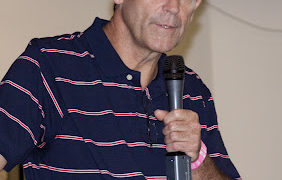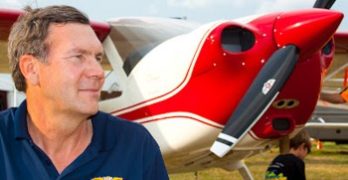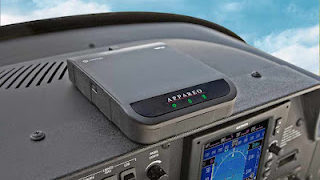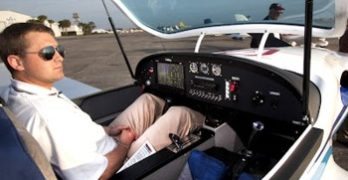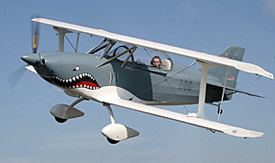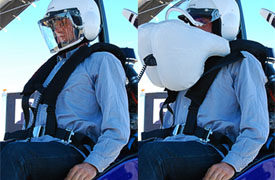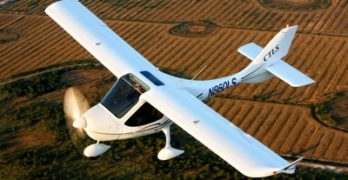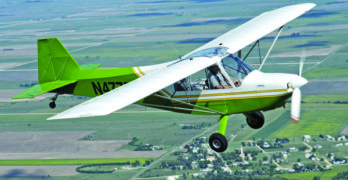Photo Wrap Up: Some other stories that will get fleshed out down the road here and in the magazine. Sun ‘n Fun ends tomorrow. Long Live Sun ‘n Fun.
Search Results for : flight design ct
Not finding exactly what you expected? Try our advanced search option.
Select a manufacturer to go straight to all our content about that manufacturer.
Select an aircraft model to go straight to all our content about that model.
Sun ‘n Fun 2012: Day Four
I caught up with a fellow hang glider pioneer from the 70s’, Scott Severen of U.S. Aviation, Denton, TX who filled me in on the latest events for his broad-based Light Sport/GA service and repair center. *** U.S. Aviation is a large, well-established aviation service center that does it all: flight training, aircraft and avionics sales, service and maintenance (for general aviation as well as LSA). *** Scott has been involved with Indus Aviation and its Thorpedo LSA aircraft for years. That project is moving to a China-based manufacturing base and “It’s a big process to pull it all together,” he says. He was just over there, assembling a couple Thorpedos to support the transition. *** “It will be a beautiful facility over there once it’s built. We’ll still do parts and aircraft sales in Dallas, and US Aviation will assist in factory support of the Thorpedo; it’s one of several LSA we do.
Sun ‘n Fun Day Two: Take Four
Bret Koebbe of Sporty’s Pilot Shop introduced me to a cool new ADS-B weather uplink product, the Stratus. *** US built by Appareo Systems, it’s a completely portable, wire-free, subscription-free weather solution that works in conjunction only (so far) with the Foreflight ap for the iPad. *** The Stratus provides ADS-B-based weather, Nexrad, Metars, TAS, Airmets, Sigmets, TFRS, “the whole nine yards of everything that’s included with ADS-B” as Bret describes it, all wirelessly transmitted to your in-cockpit iPad. *** It uses the iPad’s WiFi connection, and can be broadcast to more than one iPad in the cockpit. Just open Foreflight, link it to the Stratus box, and you’ve got all your weather info with you. *** The ADS-B weather coverage will be coast to coast-complete sometime in 2013. *** It’s a simple device: eight-hour battery, wire free, built-in ADS-B antenna buiilt into the box, and also includes WAAS GPS with 1-2 meter accuracy.
Pushing the Envelope
Supersonic flight pioneer and WWII ace Chuck Yeager is famous for using, if not coining, the term “pushing the envelope,” which has entered the popular lexicon for just about anything to do with growth and meeting challenges. *** In that vein, since the day the Light Sport category became a fixture of the aviation regulatory landscape, there have been calls to do everything from abolish it outright to expand it’s current parameter. The parameters invoked to arrive at the perfect light aircraft involve the Usual Suspects: faster, bigger, stronger, heavier, better load, no altitude restrictions etcetera etcetera etcetera. *** In that vein, I want to share with you some cogent email comments received from Plane & Pilot magazine reader Dr. Barry Gloger who puts forward a well-reasoned argument for reworking the LSA concept. *** Whether you agree or not with his point of view, it’s hard to refute his logic, since it’s based on his expertise in the actual physical size of the “average American.” *** And now for The Usual Disclaimer: his viewpoint does not necessarily reflect my opinion or that of the staff of P&P mag.
FAA’s 20-Year Forecast; Focus on Light-Sport
FAA issued its 20-year forecast for aviation showing growth prospects for business jets and Light-Sport Aircraft. It also forecasts a decline in the total number of piston-powered aircraft. Viewed from a distance, this might seem beneficial to Light-Sport Aircraft producers and sellers. Reasonably, FAA’s report appears to suggest recreational pilots will enjoy more hours aloft in a growing fleet of LSA. *** Against a backdrop of what seems to be continuously increasing prices for avgas — some believe 100LL might even disappear — the fuel efficiency of LSA becomes more important. For example, Rotax just launched their 912 iS fuel-injected engine boasting a 21% reduction in fuel consumption, taking the popular engine from burning about five gallons per hour to a theoretical four gallons in an hour of flying. Should we LSA enthusiasts celebrate these facts? *** Regretfully, I find FAA’s forecast improbable (see details below). Not that the agency’s number crunchers are wrong; in fact, I hope they might be right.
Biplane Comet Hits 100 — Lycoming Coming
Fk Lightplanes in Germany celebrated the production of Number 100 of their fascinating model the Fk12 Comet. This snappy handling, steady flying, folding wing biplane has no competitors in the LSA space, even with 123 total models winning Special LSA approval. At airshows here in America, Hansen Air Group has been showing the Comet to substantial interest. It has enough going for it that we’ve made several videos about it (at AirVenture 2011 and earlier at at Sebring 2011) plus a video mini pilot report. *** German designer Peter Funk (photo) — who I’ve known for many years — counts himself among those pilots who have a soft spot for biplanes. This interest stimulated the prolific designer to create a lightweight biplane way back in 1994. He said his intention was to build not only a plane preserving the classical style of a biplane but that would also provide good flight performance and be easily and comfortably folded up for hangar storage.
Now You Don’t See It, Now You Do
The Aviator Airbag System was introduced to America at the Evolution Trikes booth at the Sebring LSA Expo 2012 courtesy of Laurent Thevenot. Designed and manufactured for La Mouette in France by Helite, the complete system includes two airbags and sensors. For trikes, two different airbags are recommended. For the person in the back seat, the smaller vest (photo) is enough to protect the passenger’s head from snapping forward too quickly or too far in a crash, thereby preventing neck injuries. *** For the person in the front seat, a larger jacket is recommended. It also protects the wearer from neck injuries, but go further by protecting the pilot from the control bar, which could come rearward in a violent impact and break the pilot’s ribs. The larger jacket expands to 40 gallons of volume. *** The system uses a patented cold gas technology, unlike typical hot gas technology used in other airbag systems.
Light-Sport Aircraft… What? How? Why?
Light-Sport Aircraft are the newest category of aircraft as defined by FAA, the government regulatory agency for aviation. The new breed of aircraft – 109 models in just five years of astonishingly rapid development – offer affordable purchase prices, low cost of operation, spacious interiors, the latest instrument innovations, energetic performance and lively handling. Every one of these new airplane meets new industry standards.
Any Light-Sport Aircraft (LSA) must fit within the following parameters: A maximum of two occupants, a maximum take-off weight of 1,320 pounds (seaplanes can weigh 1,430 pounds); a 45-knot clean stall speed; a 120-knot top speed at maximum continuous power; a single, non-turbine engine; and fixed landing gear (though amphibious floatplanes can have “repositionable” gear). Some are called Special Light-Sport Aircraft (SLSA) if they are fully manufactured and ready-to-fly. A manufacturer can also offer a kit aircraft based on the SLSA; it’s called an Experimental LSA or ELSA.
Rans S-7 Courier LS
Available Fully Assembled or as a Kit
Unlike the flock of internationally
designed Special Light-Sport Aircraft,
RANS is a familiar name to Americans.
Even closer to home, ultralight enthusiasts know
the brand very well; ultralight aviation is the
arena that gave designer Randy Schlitter his
start. I first recall seeing the brand at Sun ‘n
Fun around 1984. And each year subsequently, it
seemed, Randy showed up with something new.
Not long into this profusion of new designs came
the S-7.
“The design of the S-7 originated out of the
need to train [single-place] Coyote I pilots,”
Randy explains, “so the cockpit was set up the
same with throttle on the left, and stick in the
middle.” Randy adds that he named the Courier
in honor of one of his favorite planes, the STOLperforming
Helio Courier.
The S-7 Courier was the first 2-seater produced
by RANS, dating to 1985 when the first prototype
flew, succeeding the S-4/5 single-seater that
kick-started the aviation business of the nowwell-
known airplane manufacturer.
End-‘O-Year Registration Numbers
The much-anticipated LSA Market Share numbers as compiled by LAMA Europe’s head dude Jan Fridrich are up on Dan Johnson’s blog this week. They expand on some anticipated, surprising and overall encouraging themes. Sales were up at Sebring and many companies are posting strong numbers. *** First, in the No Brainer Dept: Cessna and CubCrafters won the year hands down. *** Big Cessna, as the charts Dan and Jan compile clearly show, had the largest number of registrations in 2011 with 134, a record for the LSA industry and fully 48% of all listings for the year. The numbers reflect Cessna playing catchup on its 1,000 order glut back at the beginning of the LSA movement. *** As Dan is always quick to clarify and I like to remind you, these are not sales numbers, but actual registrations and thus will lag sales numbers somewhat or, in Cessna’s case with their long initial production delays, quite a bit.
- « Previous Page
- 1
- …
- 97
- 98
- 99
- 100
- 101
- …
- 145
- Next Page »


